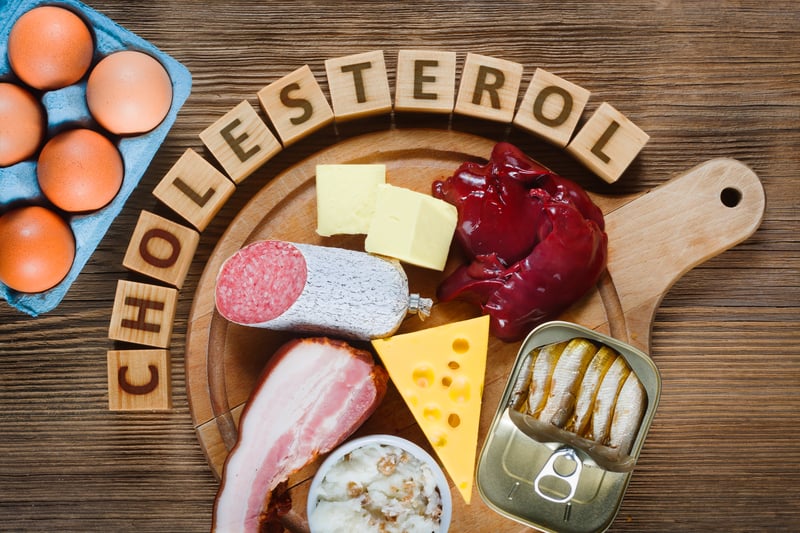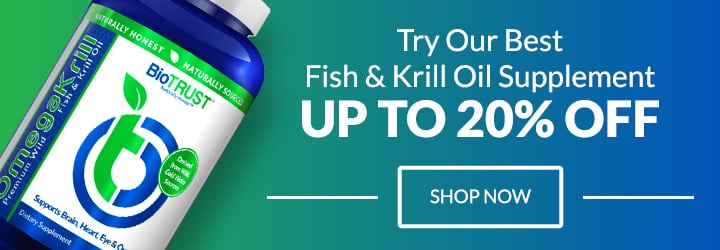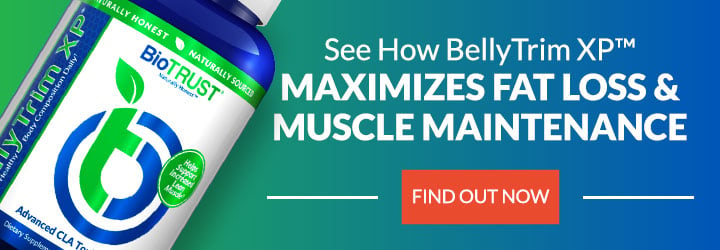The Truth About Cholesterol (Is Cholesterol REALLY Bad?)

When you hear or see the word “cholesterol,” what comes to mind? There’s a good chance you’re not thinking about sunshine and rainbows. After all, for decades, cholesterol has been demonized and vilified as the poster child for heart disease. But what’s the truth about cholesterol? Why do we need it? What are the different types of cholesterol? What causes high cholesterol levels? Do foods (like eggs) really contribute to high cholesterol levels? Let’s set the record straight on this poorly understood molecule.
Why Do We Need Cholesterol?
So, what exactly is cholesterol, and why do we need it? Those are good and very important questions to ask. Cholesterol is a waxy, fat-like substance that serves many vital functions in the body:1
- It is present in all our cells.
- It is a precursor to hormones, including the five major classes of steroid hormones (e.g., androgens, estrogens, cortisol, progesterone, aldosterone).
- It is used to make vitamin D.
- It is used to make bile salts, which are crucial for proper fat digestion.
Simply put, cholesterol is vital to health and function. It is so darn important, in fact, that the body produces it. Yes, you read that correctly. The liver produces about 2 grams of cholesterol daily, accounting for about 80% of the cholesterol needed.2
Converse to what most people still think, dietary cholesterol only contributes a minor fraction to total cholesterol. Even America’s ultra-conservative nutrition advisory panel, the Dietary Guidelines Advisory Committee (DGAC), recently stated, “Available evidence shows no appreciable relationship between consumption of dietary cholesterol and [blood] cholesterol.”
If that’s not enough, epidemiological studies (which look at the incidence and control of diseases) have clearly demonstrated that dietary cholesterol is NOT associated with increased risk of coronary heart disease (CHD).3 And while dietary cholesterol may increase LDL levels in sensitive folks (about 25% of the population), HDL cholesterol also rises, and they maintain a stable LDL/HDL ratio, which is a key marker of CHD risk.
Basically, the body requires a certain amount of cholesterol daily. The more you consume through dietary sources, the less you produce, and vice versa. And for heaven’s sake, can we please throw out the idea that eating eggs causes high cholesterol?

What Are the Different Types of Cholesterol?
Because cholesterol is a lipid-like substance, it doesn’t travel well in the blood. As a result, the body carries cholesterol and other fats in packages called lipoproteins. There are five main types of lipoproteins:4
- Chylomicrons are very large particles that carry triglycerides (fats from the food you eat). They are made in the digestive system.
- Very-low-density lipoprotein (VLDL) particles also carry triglycerides to tissues. They are made by the liver.
- Intermediate-density lipoprotein (IDL) particles form from VLDLs. As the name implies, IDL is an intermediate carrier between VLDL and LDL.
- Low-density lipoprotein (LDL) is a cholesterol-rich particle that transports cholesterol to tissues.
- High-density lipoprotein (HDL) is a cholesterol-rich particle that transports cholesterol to the liver for disposal or recycling.
HDL is typically classified as “good” cholesterol. And, generally speaking, higher levels of HDL are associated with better heart health outcomes. On the flipside, LDL has traditionally been viewed as “bad” cholesterol because it tends to be associated with the plaque buildup in the arteries. Plaque deposits can narrow arteries and limit blood flow, and when plaque breaks apart, it can cause issues (e.g., heart attack, stroke). No wonder LDL has gathered such a bad rap.
Unfortunately, this overly simplistic view may not paint a complete picture. More specifically, the size and density of the LDL particles matters. For example, small, dense LDL particles, which are considered to be a predictor of coronary heart disease, have higher artery-clogging properties. On the other hand, large, fluffy LDL particles are considered to reduce the risk of cardiovascular disease.5,6
Simply knowing how much LDL you have doesn’t tell you about the size of the particles. Even then, there may be even more important variables that can provide insight into heart health and risk.
Along these lines, even the American Heart Association “urges all Americans to have their physicians determine their total and HDL [“good”] blood cholesterol levels.” The optimum cholesterol ratio (obtained by dividing the HDL cholesterol level into the total cholesterol) is 3.5 to 1.
In addition to those variables, there is now more emphasis on looking at non-HDL cholesterol, which would include very low density lipoproteins (VLDL) and Apo-B, which is a small, dense chylomicron remnant.4 Apo-B is considered by some to be a better predictor of cardiovascular risk than the more commonly used LDL.7 In addition, C-reactive protein (CRP), homocysteine, and triglycerides are other blood variables that are often considered when painting the complete cardiovascular-wellness picture.

What Causes High Cholesterol Levels?
So, if dietary cholesterol isn’t the culprit of “high” cholesterol levels, which, as described above, may not be the villain we’ve long been led to believe, what causes “bad” cholesterol to go up? What causes “high” cholesterol levels?
Besides dietary cholesterol, the finger has long been pointed at saturated fats. While the fact that saturated fats raise total and LDL cholesterol is well established (central to the ol’ lipid hypothesis), it’s now recognized that this is another paradigm that may be overly simplistic. For example, there are different types of saturated fats, and some (e.g., myristic acid) may have stronger effects on LDL and HDL cholesterol than others.15
Also, replacing saturated fats with refined carbohydrates decreases LDL particle size and increases triglycerides. That’s bad news, as you may recall from above, considering that small, dense LDL particles and high triglycerides are thought to be critical indicators of cardiovascular risk. Not surprisingly, the risk of heart attack increases by 33% when as little as 5% of calories from saturated fat are replaced with refined carbohydrates.16
Plus, regular consumption of refined carbohydrates (e.g., added sugar, “foods” made with refined flour, refined grains) has well-known effects on metabolic function and blood glucose levels. This is crucial to point out because insulin activates a key enzyme (the very same enzyme targeted by popular statin medications) involved in the body’s synthesis of cholesterol. That’s right, insulin plays a role in the synthesis and absorption of cholesterol. This may explain why folks with insulin resistance (e.g., diabetes, obesity) often have high cholesterol and triglycerides (yet low HDL).17,18
Perhaps most important to mention is something called oxidized cholesterol (also called oxysterols), which seems to be most problematic when it comes to heart and blood vessel health. You see, oxidized cholesterol is a problem because it’s quickly cleared from the blood. One of the places that it gets cleared to is the atherosclerotic plaque we want to avoid.
According to Dr. Fred Kummerow, the primary cause of heart disease is oxidized cholesterol and fats, which both increase calcium deposits on arterial walls (a major hallmark of atherosclerosis) and by impeding blood flow (a major contributor to heart attack and sudden death).19 Oxidized LDL also increases blood clotting, which further contributes to heart disease.
According to Dr. Kummerow, there are three diet and lifestyle factors that underlie the current epidemic of heart disease and directly contribute to oxidized cholesterol buildup:
- Commercially fried foods, which contain oxidized fats and cholesterol and trans fats
- Excess polyunsaturated fats from vegetable oils (like soybean oil), which drive oxidation of cholesterol in the body
- Cigarette smoking
Overall, from a dietary standpoint, it seems like the types and combinations of fat and carbs consumed have the biggest influence on cholesterol levels in the blood, with refined carbohydrates and oxidized fats being the most impactful. Guess what the typical Western-style diet is characterized by? You got it: high intakes of refined carbohydrates and poor-quality, oxidized fats (e.g., vegetable oils, trans fats).

How to Lower Bad Cholesterol
On the flipside, you may be wondering how to lower bad cholesterol or what foods can help reduce cholesterol. Without question, lifestyle modification is the first step in reducing cholesterol levels and cardiovascular risk. Of course, there are non-modifiable risk factors, such as age, genetics, and gender. Modifiable risk factors include smoking, high blood pressure, diabetes, and obesity. In other words, changes in diet, increased exercise, and weight loss are all known to be effective.4
Along these lines, the American Heart Association has distilled ideal cardiovascular health down to Life’s Simple 7, which is made up of four behaviors and three factors. These measures have one unique thing in common: any person can make these changes, the steps are not expensive to take, and even modest improvements will make a big difference:
- Manage Blood Pressure (<120/80 mmHg)
- Control Cholesterol (<200 mg/dL)
- Reduce Blood Sugar (<100 mg/dL)
- Get Active
- Eat Better
- Lose Weight
- Stop Smoking
From a dietary standpoint, a huge step in the right direction would be to eliminate the junk food mentioned above. That means tossing the processed, packaged, and refined “foods” that contain poor-quality fats, added sugar, and/or refined grains. Instead, eat more whole, minimally processed foods. Generally speaking, whole-foods-based dietary approaches like the Mediterranean and Paleo diets consistently rank highly for diet quality, lower levels of inflammation and oxidative stress, overall health, and longevity.20,21
Eating a diet rich in fruits and vegetables is a cornerstone for heart health and healthy cholesterol levels. Fruits and vegetables are packed with antioxidants, which can help protect against oxidized cholesterol and lipids. They are also loaded with a variety of phytonutrients that have cholesterol-lowering properties. When it comes to fruits and vegetables, most people can’t overdo it.
Dietary fiber has significant cholesterol-lowering properties. Fiber can interfere with the amount of bile, which is necessary for the breakdown of dietary fats, that is reabsorbed in the intestines. To make up for this loss, the liver must produce new bile salts, which are composed of cholesterol. So, increasing your fiber intake by eating more vegetables, fruits, legumes, and whole grains (e.g., oats) can have a cholesterol-lowering effect.
Speaking of whole grains, research clearly shows that consumption of whole grains lowers total and LDL cholesterol, and oats (thanks at least in part to beta-glucan fiber) are particularly effective for lowering cholesterol.22 Similarly, nuts are commonly deemed “heart healthy,” and for good reason. Nut consumption reduces triglycerides, total cholesterol, LDL cholesterol, and the ratio of total to HDL cholesterol.23
Certain herbs and spices like garlic, cumin, and ginger can have a cholesterol-lowering effect by blocking cholesterol uptake in the gut. Further, dark chocolate that’s high in cocoa (70% or more) has been shown to lower LDL while increasing HDL cholesterol. Meanwhile, tea can help lower cholesterol, reduce arterial plaque, improve blood vessel function, and reduce lipid oxidation.

What Foods Increase HDL Levels?
While all dietary fats raise HDL cholesterol, their relative potency in doing so is not equal. The dietary fat-HDL hierarchy looks like this: saturated > monounsaturated > polyunsaturated. That’s right, saturated fat (another often-vilified nutrient among the ranks of cholesterol) is more adept than monounsaturated and polyunsaturated fats at raising HDL cholesterol.24
And while there’s no question that dietary fat can increase HDL levels, do you want to know something that lowers them? High-carbohydrate diets. Yep, the long-standing, conventional low-fat dieting approach actually reduces HDL (and also raises triglycerides).25
This may explain why high-fat, low-carbohydrate diets (such as the ketogenic diet) often lead to higher levels of HDL.
Something worth pointing out here is that the HDL story is a bit more complex than what we’ve long been led to believe. Remember, HDL is typically referred to as “good” cholesterol because it picks up cholesterol from the bloodstream and brings it back to the liver for recycling and disposal. Generally speaking, higher HDL levels are associated with lower risk of heart attack.
As it turns out, however, HDL is probably more of a bystander. That is, it’s becoming apparent that HDL seems to be a marker for other factors that may raise or lower the risk of cardiovascular disease. For example, people with low HDL levels typically have other problems that are often closely associated with heart disease, such as obesity and/or diabetes. In other words, low HDL may not be the primary risk factor to target.
Having said that, higher HDL levels are typically the result of healthier lifestyles. Along those lines, the behaviors discussed above for lowering cholesterol can all be helpful in raising HDL:
- Get and stay physically active
- Eat better (In particular, eat better, higher quality fats from whole foods.)
- Cut out trans fats (In other words, cut out processed and fried foods.)
- Lose weight
- Stop smoking
What is a Good LDL Level?
Here is a breakdown for good LDL levels:
- 100: Optimal
- 100-129: Near or above optimal
- 130-159: Borderline High
- 160-189: High
- >190: Very High
Here is a breakdown of healthy levels of total cholesterol:
- <200: Desirable
- 200-239: Borderline High
- >240: High
Here is a breakdown of ideal Triglyceride Levels:
- <150: Normal
- 150-199: Borderline High
- 200-499: High
- >500: Very High
The Truth About Cholesterol: A Breakdown
- As nice as it would have been to be so black and white, cardiovascular disease is not as simple as the lipid hypothesis.
- In other words, while cholesterol seems to play a role in heart disease, it’s definitely not the only factor involved.
- Dietary cholesterol is not correlated with increased risk for heart disease, and it has little impact on blood cholesterol levels.
- The heart health picture is complex, but the solution is fairly simple: lifestyle modification is king, and emphasis should be placed on diet quality, physical activity patterns, and behaviors.








